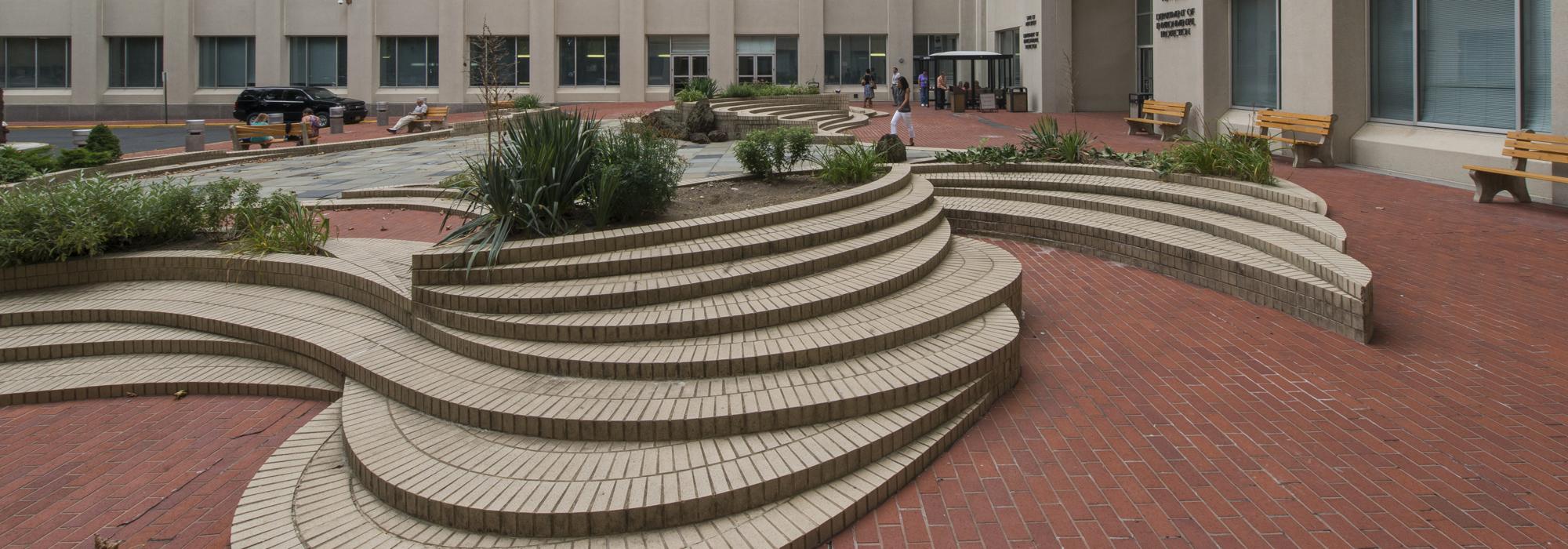New Jersey's "Done Deal": Destroying a Historic Resource with False Choices
From mobile phones to Starbucks beverages, we are used to having lots of options. So, when it comes to the disposition of historic resources, why do governmental officials so often offer us false choices?
For example, the City of Minneapolis, as I've previously written, says there are no reasonable alternatives to the demolition of landscape architect M. Paul Friedberg's modernist icon Peavey Plaza. Even after Friedberg developed a new concept that addressed the City's concerns (such as accessibility), City officials continue chanting their no alternatives mantra. Now, some New Jersey state officials are chanting their own version of the no alternatives mantra.
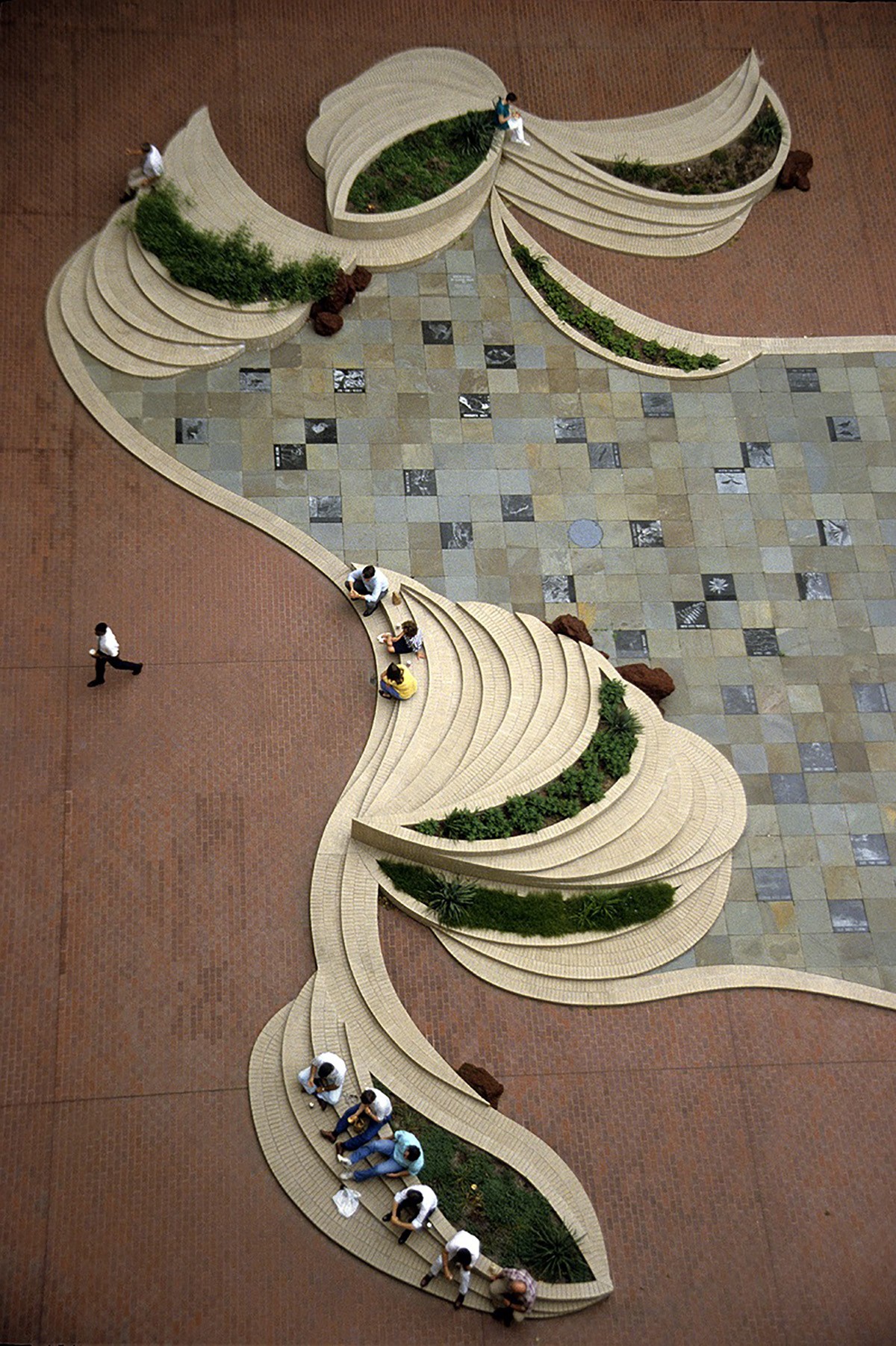
The New Jersey situation concerns Green Acres, a site-specific sculpture created in honor of the State's much lauded land protection program of the same name, and located in the courtyard of the New Jersey Department of Environmental Protection's (NJDEP) headquarters in Trenton (adjacent to the Green Acres Program office and the State's Historic Preservation Office). Green Acres is one of more than 40 US commissions produced in the past 35 years by the Greek-American artist Athena Tacha, one of the initiators of "site-specific" architectural sculpture -- a movement that brought "land art" into an urban/social context. Her works can be found from New York to Alaska, including an entire city-block park in downtown Philadelphia.
Green Acres, created in the mid-1980's and funded by the state's "Percent for Art" program, recalls Roberto Burle Marx's biomorphic modernism and features crescent shaped planters with stepped seating that ring its edges. It also contains 46 slabs of green granite onto which photographs of state landscapes, plants and animals (many of them endangered species) have been sandblasted. The work, considered one of Tacha's most important, has been praised by museum directors and art historians, is included in Meredith Bzdak's Public Sculpture in New Jersey and is documented in the Contemporary Landscape Design Collection of Dumbarton Oaks in Washington, DC.
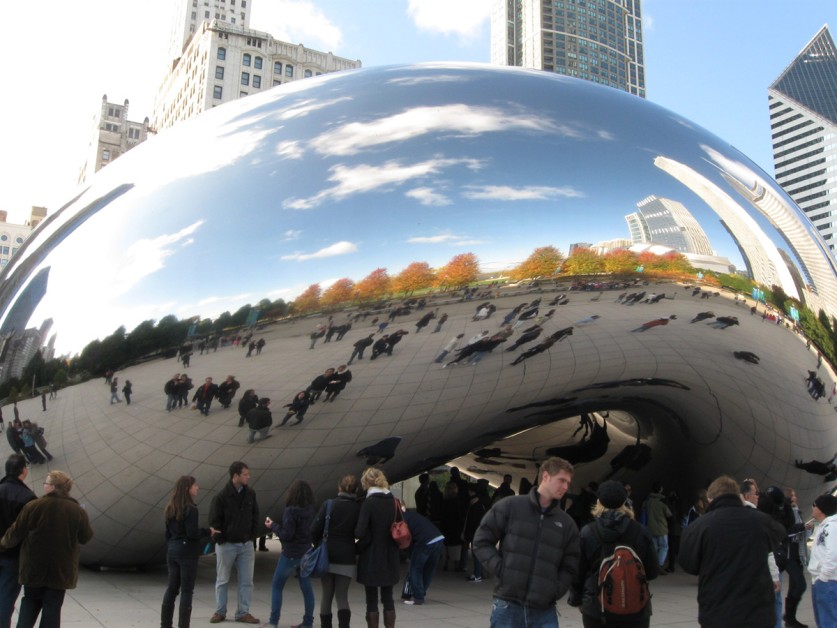
In an April 18, 2012 letter, Guy Bocage at the State of New Jersey's Department of the Treasury informed Tacha that on or after July 31, 2012 the work was slated for demolition, though the artist could remove the work at her own expense, if she wished. The problem is, Green Acres is a site-specific work, defined in part by its setting and its relationship to the surrounding buildings and neighboring Mercer Cemetery, which it borders. Removing and/or relocating the work ruins it's integrity of setting. (Imagine if someone advocated moving Anish Kapoor's Cloud Gate - a.k.a. "the bean" - from Chicago's Millennium Park, another site-specific work defined in part by its setting and surrounding cityscape).
Why demolition? Green Acres, like Peavey Plaza, has not been well maintained and its current diminished physical condition is one reason the State wants it demolished. In other words, they're saying they broke it and are now complaining that it's broken.
But, the Green Acres wrecking crew have some other reasons: they say the site would impede an evacuation of the building complex (an issue never previously raised); and they want to demolish and landfill Green Acres and replace it with something new. As NJDEP spokesman Larry Hajna told the Newark Star Ledger: "We will green up the space and send a message. We're practicing what we preach." In a Times of Trenton interview, another NJDEP spokesman, Larry Ragonese, was slightly more specific: "We're looking to take out the brick and install a rain garden ...It's the type of model that we've been preaching to urban communities across the state."
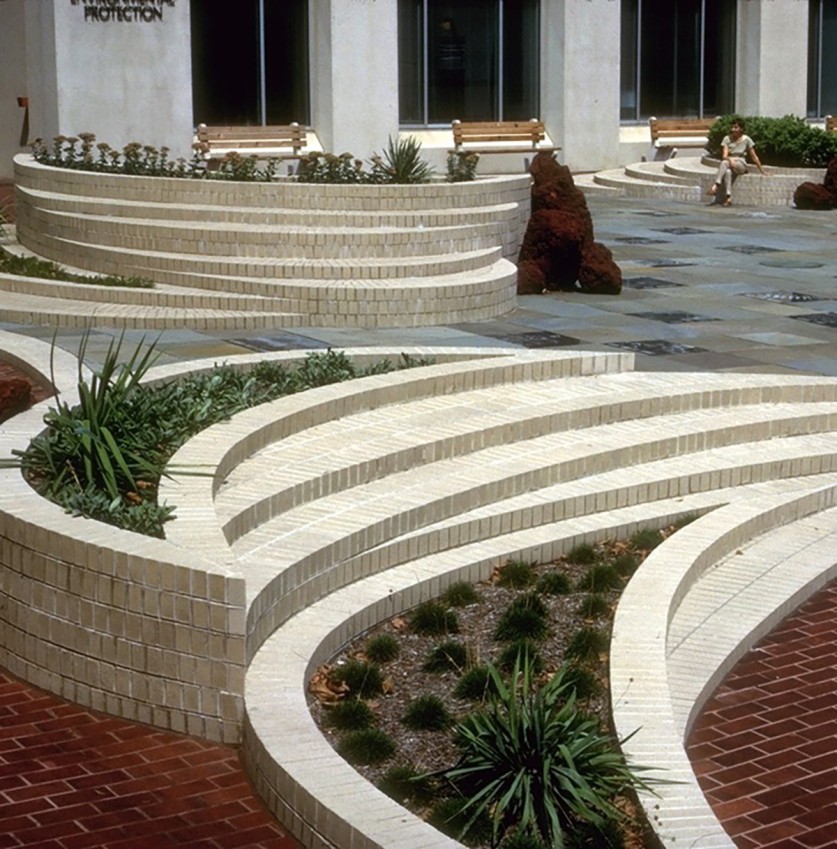
Does anyone see the irony in all this "preaching"? In order to burnish their "green" bona fides, NJ state officials will unnecessarily engorge a landfill with the remnants of a work created in honor of the State's nationally famous half-century old conservation program.
There must be reasonable alternatives, right? Not according to NJDEP's Ragonese who told the Associated Press: "the work's removal is a done deal."
"A done deal." Really?
That rather brusque tone is not flying and word of the planned demolition has already yielded front-page coverage at the Newark Star Ledger and Times of Trenton, a Times of Trenton editorial supporting the site's preservation, along with coverage from the Associated Press, artinfo.com, Landscape Architecture Magazine, ASLA's The Dirt, Architect Magazine and Art Market Monitor; and the attention of numerous organizations. Richard Bartolone, president of the New Jersey Chapter of the American Society of Landscape Architects wrote the Treasury's Bocage, saying: "There are so few significant, socially relevant art works in New Jersey, let alone in our state's capital."
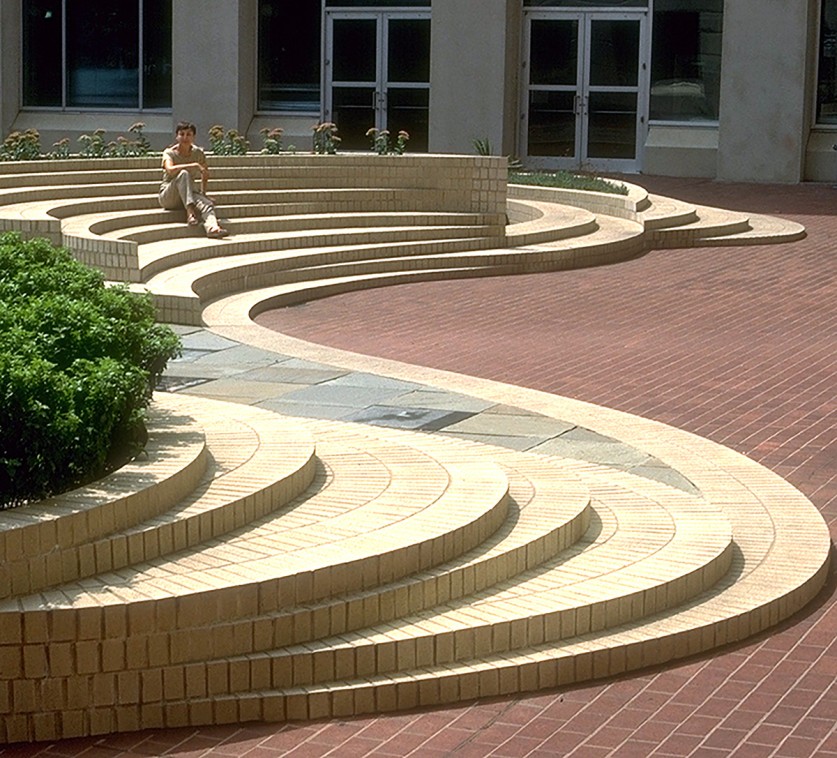
Ann Marie Miller, Executive Director of Art Pride New Jersey Foundation fired off this pointed letter to Bocage:
Before considering removal of this now historic work ... it would be important to more clearly understand the alternative cost savings that may occur by repair to the "brick cracks, chipped corners and sunken slate slabs" described in your letter of 4/18/12 [to Athena Tacha]. It would also be helpful to know what authority has declared the work a public safety risk, to see documentation of that status, and the plans and budget for demolition and replacement. If such documentation is not offered publicly, an OPRA [Open Public Records Act] request will be filed."
As it turns out, the State has received $1 million in Federal funds to rip out Green Acres and create their bucolic sounding "rain garden", a revelation that prompted the following from Stephanie L. Cherry-Farmer, Senior Programs Director of Preservation New Jersey:
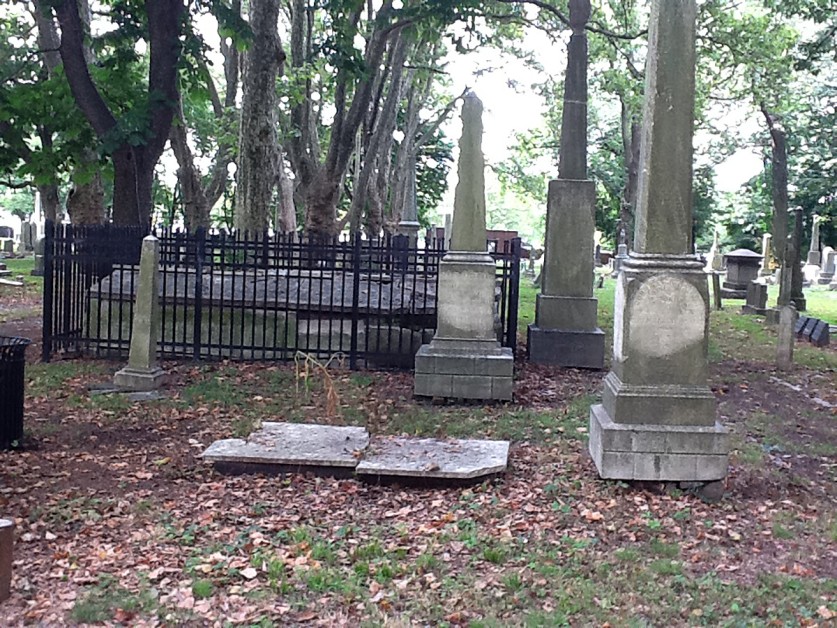
"We understand that this project is being funded with federal money, which means that a review of the project for potential impacts on historic properties is required by Section 106 of the federal Historic Preservation Act. In this case, the New Jersey Historic Preservation Office needs to be engaged immediately to determine whether Green Acres is eligible for the National Register of Historic Places."
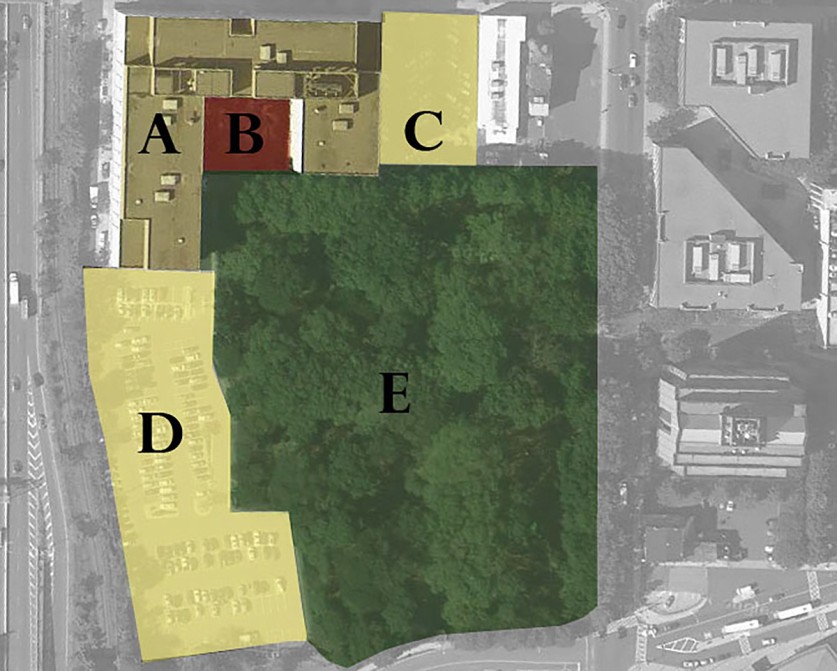
Rather than further hammer state officials, let me offer some solutions that could help them practice what they preach. NJDEP's buildings (A, left) are flanked by two parking lots (C+D, left) covered with nearly 100,000 square feet of impervious asphalt, which leads to storm water runoff problems. Why not rebuild them to be pervious? The asphalt can be recycled. And instead of a small, partially shaded courtyard (B, left), consider using the estimated 62,000 square foot rooftop (A, left) for the rain garden. In addition, NJDEP could work with the City of Trenton and Mercer Cemetery supporters to reopen access to the historic cemetery (E, above), a 19th-century open space listed on the National Register of Historic Places that was rehabilitated in 1992 (courtesy funding from the Green Acres Program and the City of Trenton), but currently closed because of City budget cuts (for example, see the New York Times article detailing the successes of the Trustees of the New York Marble Cemetery).
By re-engineering the flanking parking lots, constructing a new rain garden/green roof, renewing Green Acres, and, reopening the park-like historic cemetery, the State and Trenton create a dynamic urban district that possesses and showcases rich environmental, ecological and cultural values.
Additionally, such an approach would honor the State's Green Acres Program and its mission "to achieve, in partnership with others, a system of interconnected open spaces, whose protection will preserve and enhance New Jersey's natural environment and its historic, scenic, and recreational resources for public use and enjoyment." Further, it would recognize the neighboring State Historic Preservation Office's mission of "enhancing the quality of life for the residents of New Jersey through the preservation and appreciation of our collective past."
TCLF is actively working to save this significant landscape. To get involved, the public is encouraged to voice their support for the preservation of Green Acres by signing the change.org petition or writing to Guy C. Bocage, Deputy Director of the N.J. Department of Treasury, P.O. Box 034, Trenton, NJ 08625-0229. The public can also help get the word out by contacting local newspapers and media outlets and alerting them to the imminent destruction of this important work of public art commissioned by the State and symbolic of its environmental heritage.
This blog first appeared on the Huffington Post website on July 31, 2012.



